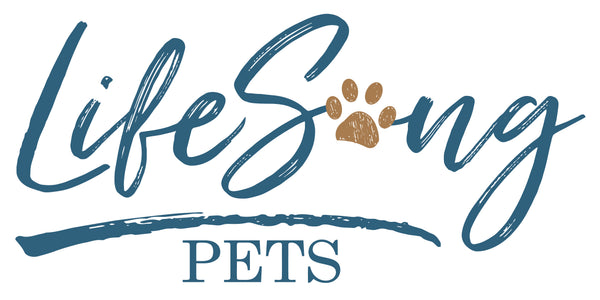
Training a Rescue Dog: Building Trust and Ensuring Success
LifeSong StaffAdopting a rescue dog is a rewarding experience, but it also comes with unique challenges. Rescue dogs may have unknown backgrounds, past traumas, or inconsistent training experiences. Successfully training a rescue dog requires patience, consistency, and understanding. This comprehensive guide will walk you through the essential steps to help your new companion adjust to their new home and become a well-behaved and happy member of your family.
Understanding Your Rescue Dog's Background
Before you start training, it's essential to understand your rescue dog's background as much as possible. This knowledge can provide valuable insights into their behavior and needs.
1. Gather Information:
- Ask the Shelter: Inquire about any known history, including previous owners, living conditions, and behavior issues.
- Observe Behavior: Spend time observing your dog’s behavior in different situations to identify triggers or fears.
2. Be Patient:
- Allow Adjustment Time: Your dog may need time to adjust to their new environment. They may be scared, anxious, or overwhelmed.
- Respect Their Pace: Avoid rushing the dog into new experiences. Let them explore and adjust at their own pace.
Establishing Trust and Bonding
Building trust is the foundation of training any dog, especially a rescue dog that may have trust issues.
1. Create a Safe Space:
- Designate a Quiet Area: Provide a comfortable, quiet space where your dog can retreat and feel safe.
- Use Positive Reinforcement: Reward your dog with treats, praise, and affection for calm and positive behavior.
2. Consistency is Key:
- Set a Routine: Establish regular feeding, walking, and bedtime routines to create a sense of security.
- Consistent Commands: Use the same words for commands to avoid confusion.
3. Spend Quality Time:
- Engage in Play: Play interactive games to build a bond.
- Grooming and Petting: Regular grooming and gentle petting can strengthen your relationship.
Basic Training Techniques
Once your dog feels secure and trusts you, you can begin basic training. Focus on positive reinforcement and patience.
1. House Training:
- Establish a Schedule: Take your dog outside regularly, especially after meals and naps.
- Reward Success: Praise and treat your dog immediately after they eliminate outside.
- Supervise Indoors: Watch for signs of needing to go and take them outside promptly.
2. Basic Commands:
- Sit: Hold a treat close to your dog’s nose, then move your hand up, allowing their head to follow the treat. This will cause their bottom to lower. Once they’re in a sitting position, say “sit” and give the treat.
- Stay: Ask your dog to sit. Open your palm in front of you and say “stay.” Take a few steps back. If they stay, reward them. Gradually increase the distance and duration.
- Come: Put a leash on your dog. Gently pull the leash and say “come” in an encouraging tone. When they come to you, reward them.
- For more in-depth information on how exactly to teach specific commands, read, "How To Teach Your Dog Basic Commands: SIT, STAY, COME, DOWN & HEEL."
3. Leash Training:
- Introduce the Leash Slowly: Let your dog wear the leash indoors before taking them outside.
- Start Indoors: Practice walking with the leash inside your home before venturing outside.
- Reward Calm Behavior: If your dog pulls on the leash, stop walking. Reward them when they return to your side and walk calmly.
Addressing Behavioral Issues
Rescue dogs may exhibit behavioral issues due to past experiences. Address these issues with patience and professional help if needed.
1. Separation Anxiety:
- Practice Short Departures: Start with short periods away from your dog and gradually increase the time.
- Create Positive Associations: Give your dog a special treat or toy when you leave to create a positive association.
2. Fear and Aggression:
- Identify Triggers: Observe what causes fear or aggression in your dog.
- Desensitization: Gradually expose your dog to the trigger at a distance and reward calm behavior, slowly decreasing the distance over time.
3. Excessive Barking:
- Ignore Attention-Seeking Barking: Do not give your dog attention when they bark for it.
- Teach “Quiet” Command: Say “quiet” and reward your dog when they stop barking on command.
Socialization
Socialization is crucial for a well-adjusted dog. It helps them feel comfortable in different environments and with various people and animals.
1. Gradual Exposure:
- Introduce New Experiences Slowly: Gradually expose your dog to new sights, sounds, and smells.
- Positive Experiences: Ensure that new experiences are positive by rewarding calm behavior.
2. Meet New People and Animals:
- Controlled Introductions: Introduce your dog to new people and animals in a controlled environment.
- Observe Reactions: Pay attention to your dog’s body language and remove them from situations if they seem stressed.
Professional Help
If you encounter challenges or if your dog has severe behavioral issues, seeking professional help can be beneficial.
1. Professional Trainers:
- Certified Trainers: Look for certified dog trainers who use positive reinforcement methods.
- Specialized Training: Some trainers specialize in working with rescue dogs or specific behavioral issues.
2. Veterinary Advice:
-
Health Check: Ensure there are no underlying medical issues contributing to behavioral problems.
-
Behavioral Consults: Some veterinarians offer behavioral consultations or can refer you to a specialist.
Conclusion
Training a rescue dog requires a blend of patience, consistency, and understanding. By focusing on building trust, using positive reinforcement, and addressing specific behavioral issues, you can help your rescue dog adjust to their new home and thrive. Remember, every dog is unique, and progress may be slow, but with time and dedication, you can develop a strong, loving bond with your new companion. Investing in their training and well-being will lead to a happy and fulfilling relationship for both you and your rescue dog.
